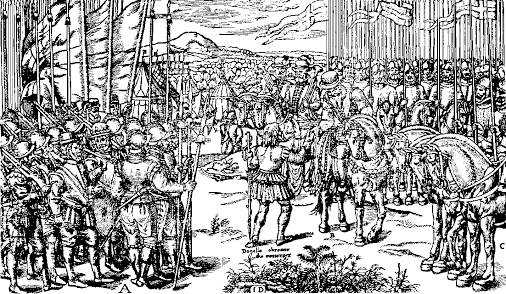Throughout September, the Daily Classical Music Post celebrates the music of 15th-, 16th-, and 17th-century England.
Anthony Holborne (c. 1545–1602) is known for his compositions for lute, cittern, and consorts, and most particularly for his dance music: in 1599 he published Pavans, Galliards, Almains and other short Aeirs, both grave and light, in five parts, for Viols, Violins, or other Musicall Winde Instruments, which contains 65 of his compositions. There isn’t a great deal known about Holborne, although we do know that he enjoyed the patronage of Sir Robert Cecil, Mary Sidney, and Elizabeth I. John Dowland dedicated his lute song “I saw my Lady weepe” “to the most famous, Anthony Holborne,” so Holborne must have been well known and respected in his lifetime.
One of my favourite pieces in Pavans, Galliards, Almains . . . is the galliard “Muy Linda” (No. 34). Johan van Veen says, “The fact that almost all the pieces in this collection are dances doesn't mean that they were meant for dancing. The rather complicated polyphony of in particular the pavans makes it more likely that they were written for the entertainment of performers and audiences.” I don’t know about that: when I hear “Muy Linda” I want to get up and dance. François Joubert-Caillet has pointed out that at the time of composition, relations between England and Spain were pretty tense, and the Spanish title of this piece could have been slightly ironic. Timothy Dickey says that “Muy Linda” is “a fairly lively triple-meter dance consisting of three repeated strains. The first strain of ‘Muy Linda’ is not the same length as the other two, but doesn't noticeably throw off the balance of the dance. What does strike the ear is the powerful rhythmic drive of this galliard. Cross-rhythms in the inner voices continually spur new momentum, and the melody itself oscillates quite frequently between simple triple meter and hemiola patterns.”
When the Voyager space probe was sent on its way in 1977, a recording of one of Holborn’s compositions, “The Fairie Round,” was included “to communicate a story of our world to extraterrestrials” (along with recordings of some Bach, The Rite of Spring, gamelan music, mariachi, bagpipe music from Azerbaijan, raga, and much more; see https://voyager.jpl.nasa.gov/golden-record/whats-on-the-record/music/).
My classical music post for today is Anthony Holborne’s “Muy Linda.”





Comments
Post a Comment